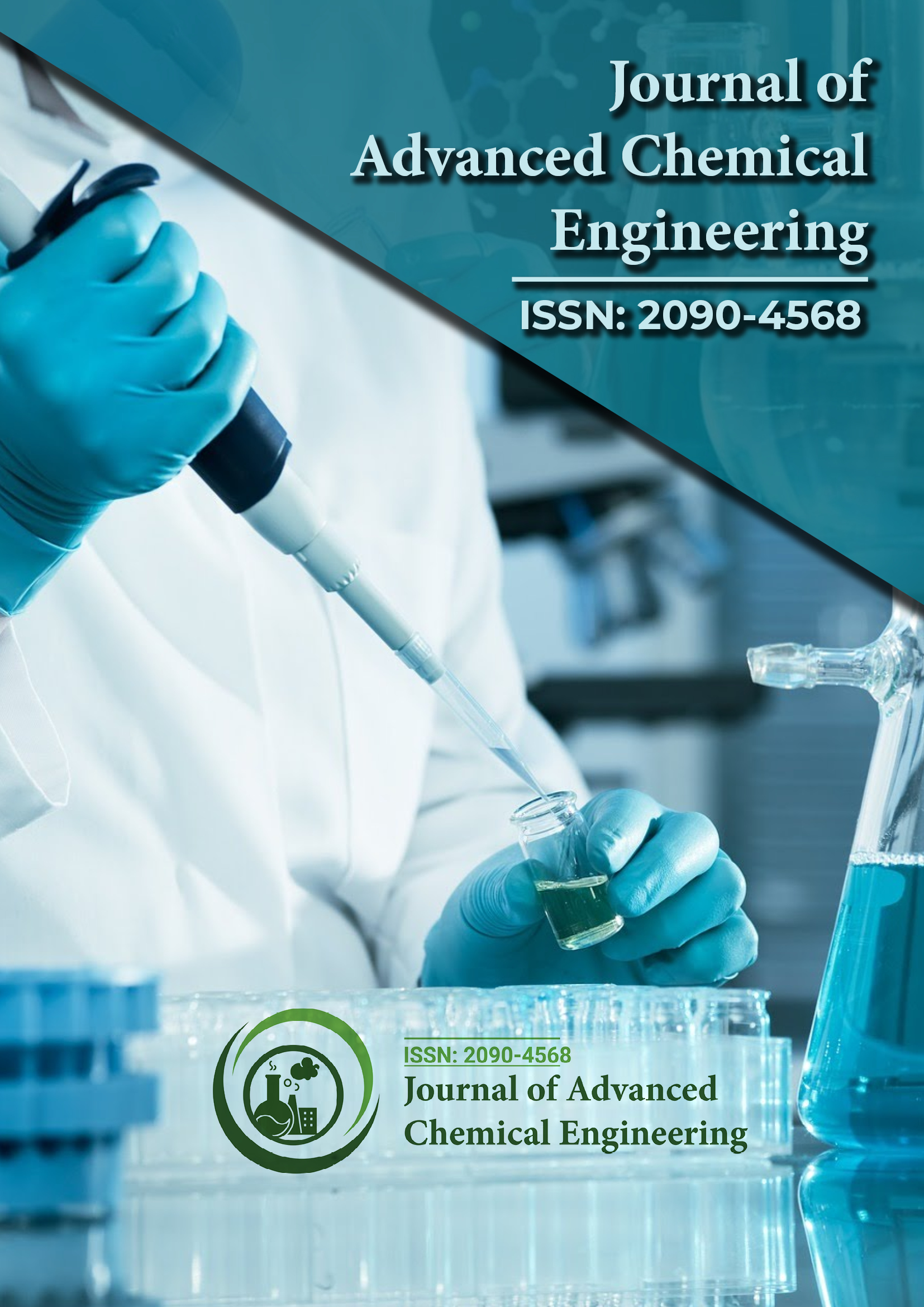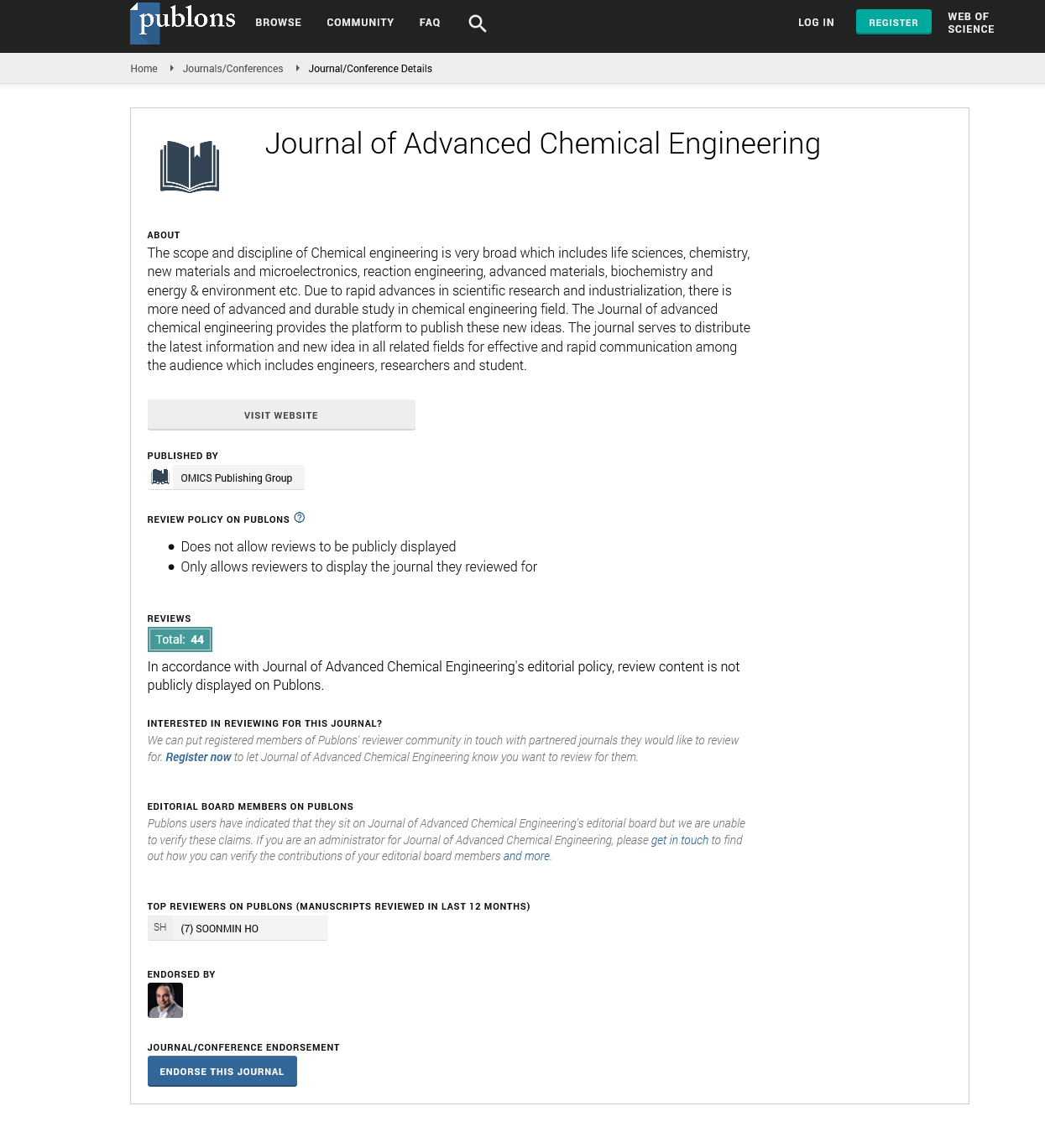Indexed In
- Open J Gate
- Genamics JournalSeek
- Smithers Rapra
- RefSeek
- Directory of Research Journal Indexing (DRJI)
- Hamdard University
- EBSCO A-Z
- OCLC- WorldCat
- Scholarsteer
- Publons
- Geneva Foundation for Medical Education and Research
- Google Scholar
Useful Links
Share This Page
Journal Flyer

Open Access Journals
- Agri and Aquaculture
- Biochemistry
- Bioinformatics & Systems Biology
- Business & Management
- Chemistry
- Clinical Sciences
- Engineering
- Food & Nutrition
- General Science
- Genetics & Molecular Biology
- Immunology & Microbiology
- Medical Sciences
- Neuroscience & Psychology
- Nursing & Health Care
- Pharmaceutical Sciences
Commentry - (2024) Volume 14, Issue 4
Advances in Computational Fluid Dynamics and Additive Manufacturing
Emily Richardson*Received: 28-Nov-2024, Manuscript No. ACE-24-28357; Editor assigned: 02-Dec-2024, Pre QC No. ACE-24-28357 (PQ); Reviewed: 16-Dec-2024, QC No. ACE-24-28357; Revised: 23-Dec-2024, Manuscript No. ACE-24-28357 (R); Published: 30-Dec-2024, DOI: 10.35248/2090-4568.24.14.349
Description
The performance of in-line flow chemical reactors is critical to their adoption in various industrial processes, ranging from pharmaceuticals to fine chemicals and petrochemicals. A potential method for improving these reactors is through the strategic modification of injector geometry. Injector design plays a significant role in controlling mixing efficiency, reaction kinetics and product yield, which are key factors for optimizing flow reactors. By enhancing the injector geometry, it is possible to address challenges related to inefficient mixing, localized hot spots and incomplete reactions, thereby significantly improving reactor performance.
Mixing is a fundamental aspect of flow chemistry, as it determines the extent to which reactants come into contact and interact within the reactor. Traditional injector designs often fail to achieve the high levels of mixing required for certain fast or highly exothermic reactions. Suboptimal mixing can lead to incomplete reactions or side-product formation, reducing the overall yield and selectivity. By modifying the geometry of injectors, researchers can promote more efficient mixing at the microscale, ensuring a uniform distribution of reactants and improving reaction kinetics. For example, injectors with optimized turbulence-promoting features or designs that generate vortices can enhance reactant dispersion, allowing for faster and more complete reactions.
Furthermore, injector geometry directly impacts heat and mass transfer within the reactor. In exothermic reactions, poor heat dissipation can lead to localized hot spots, potentially compromising reaction safety and product quality. Advanced injector designs, such as multi-orifice or coaxial geometries, can improve thermal management by promoting rapid heat exchange between the reacting mixture and the surrounding medium. This prevents temperature spikes and helps maintain the reactor within the desired operational window. Improved heat transfer also allows for better control over reaction rates, enabling more precise scaling of processes from laboratory to industrial settings.
The ability to modify injector geometry also opens new possibilities for tailoring flow reactors to specific applications. For instance, in multiphase reactions, such as gas-liquid or liquid-liquid systems, specialized injector designs can facilitate the formation of fine dispersions or emulsions, increasing the interfacial area for mass transfer. This is particularly important for processes such as hydrogenation, oxidation, or polymerization, where the efficiency of phase contact directly impacts the reaction outcome. Moreover, injectors designed to induce specific flow patterns, such as oscillatory or pulsatile flows, can further enhance mass transfer and reaction rates, providing a versatile platform for diverse chemical processes.
Recent advancements in Computational Fluid Dynamics (CFD) and additive manufacturing have greatly accelerated the development of innovative injector geometries. CFD simulations enable researchers to model fluid flow, mixing and heat transfer within reactors, allowing for the optimization of injector designs before physical prototypes are fabricated. Additive manufacturing, such as 3D printing, has further facilitated the creation of complex and customized injector geometries that were previously unattainable using traditional manufacturing methods. These technologies not only reduce development time but also enable rapid prototyping and iterative improvements, ensuring that the final injector design meets specific process requirements.
In conclusion, modifying injector geometry represents a transformative approach to improving the performance of in-line flow chemical reactors. By enhancing mixing efficiency, heat and mass transfer and reaction kinetics, tailored injector designs can address long-standing challenges in flow chemistry and enable more efficient, safe and scalable processes. The integration of advanced simulation tools and manufacturing technologies further enhances the feasibility of this approach, paving the way for the widespread adoption of high-performance flow reactors in industrial applications. As research in this area continues to evolve, injector geometry optimization is likely to become a cornerstone of modern reactor design, driving innovation across a wide range of chemical processes.
Citation: Chardson E (2024). Advances in Computational Fluid Dynamics and Additive Manufacturing. Adv Chem Eng. 14:349
Copyright: © Richardson E. This is an open access article distributed under the terms of the Creative Commons Attribution License, which permits unrestricted use, distribution, and reproduction in any medium, provided the original author and source are credited.

